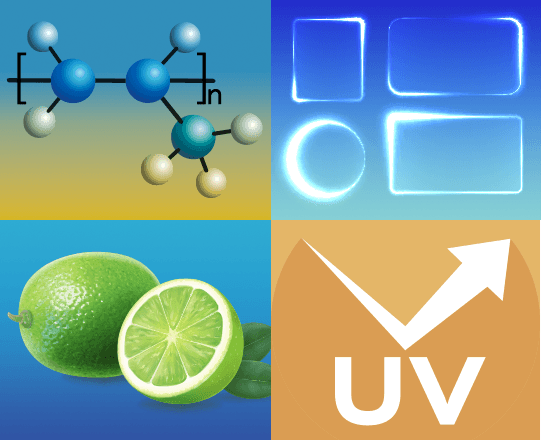Your Questions re: Polypro Tanks

Polypropylene tanks are widely used for chemical processing and storage. They are highly valued for their corrosion and abrasion resistance and can be fabricated in a wide variety of shapes. Tri-Mer tanks are manufactured in lengths to 110’ and depths to 15’. Here are the kinds of questions we most often receive about polypro and other thermoplastic tanks.
Q. Are polypro tanks the best choice for liquid storage?
A. Polypropylene tanks are often advantageous as liquid storage tanks when aggressive materials, such as acetone (dimethylketone) or diesel fuel, are involved.
Q. Which tanks are recommended for extreme temperatures?
A. CPVC (chlorinated PVC) plastic tanks, and polypropylene tanks are both usable to 220°F. PTFE is a plastic tanks material usable to 400°F. Polypropylene tanks are not recommended for temperatures below freezing.
Q. Which tanks are best for UV exposure?
A. White plastic tanks, or black plastic tanks made with UV-impregnated resins are highly UV-resistant, and are UV stabilized through the material.
Q. What tanks work best for extreme pH levels?
A. Polypropylene tanks are suitable for pH applications at both extremes.
Q. Can polypropylene tanks be any shape? Are there size limits?
A. Custom designed and fabricated tanks can be elliptical, rectangular, cylindrical – virtually any shape. Care is always taken to prevent deflection. Tank size limits typically involve shipping and logistics; large tanks are often designed so they can be shipped in multiple sections for field installation.
Q. Are polypro tanks more chemical-resistant than stainless or alloy steel?
A. Polypropylene plastic tanks are compatible with alkaline solutions, mineral oils, amines, jet fuel (JP3, 4, 5), and hydrogen peroxide, plus common acids including hydrochloric (20%), maleic, nitric (50%) and phosphoric.
There are instances where polypro is not appropriate, including concentrated acids, benzene and toluene. For concentrated acids, Hastalloy is preferred. For benzene and toluene, PVDF, a special plastic tanks resin, is often specified. PVDF plastic tanks are exceptionally resistant to inorganic acid solutions.
Q. Are the requirements for food grade tanks the same as potable water tanks?
A. Natural unpigmented polypropylene tanks are classified as food grade plastic tanks, also potable water tanks. Other food grade plastic tanks are stainless steel or FRP fiberglass.
Q. Are poly tanks, polypropylene tanks and plastic tanks all the same?
A. “Poly” can mean polypropylene or polyethylene. Plastic tanks is a category that includes those, also PVDF, a plastic tanks material that’s resistant to halogens, acids and radiation, and is the plastic tanks material of choice in the semiconductor and pharmaceutical industries.
Plastic tanks also encompasses PTFE, a plastic tanks material with excellent thermal and electrical insulation characteristics.
Q. Can fiberglass tanks be used for liquid storage?
A. Tri-Mer’s fiberglass tanks are suitable for liquid storage. Fiberglass tanks are resistant to acids, caustics and high heat, also galvanic and aerobic corrosion and many chemicals. Fiberglass tanks are suitable for petrochemical storage
Consult Tri-Mer regarding the best chemical tank material for your application.
Q. How do fiberglass tanks differ from plastic tanks or poly tanks?
A. Fiberglass tanks are made differently from plastic tanks or poly tanks. Polypropylene tanks are homogeneous. The homogeneity of polypropylene protects against chemical attack if the tanks are scratched or gouged. Fiberglass tanks can de-laminate over time. If fiberglass tanks are scratched or gouged, chemical attack can occur.
Q. Are there structural differences between fiberglass tanks and polypropylene plastic tanks?
A. Normal expansion and contraction can cause cracks within the layers of fiberglass tanks, allowing wicking and chemical attack. Expansion/contraction doesn’t adversely affect polypropylene tanks.
Also, repair (both internal and external) is easier with a polypropylene tank than with a fiberglass tank.
Q. Where appearance is important, are poly tanks generally preferable to fiberglass tanks?
A. Polypropylene tanks provide a cosmetically cleaner appearance than fiberglass tanks.
Q. Are polypropylene tanks the best choice for bulk storage tanks or food grade plastic tanks?
A. Polypro is FDA-approved and prices for these plastic tanks are low.
Q. Are polypropylene tanks most versatile?
A. Polypropylene tanks are suitable for many applications. Exceptions include strong oxidizing agents, and chlorinated or aromatic hydrocarbons. Polypro plastic tanks are not suitable for these.
Q. How do polypropylene tanks differ from FRP tanks?
A. Polypropylene is homogeneous and is not laminated, as is FRP. Also, if the tank is damaged, polypropylene tanks are easier to repair than FRP, regardless of whether the damage is internal or external.
This form is the fastest way to get in touch with us.
A more detailed form, located here, will tell us what we need to generate a detailed quote.





